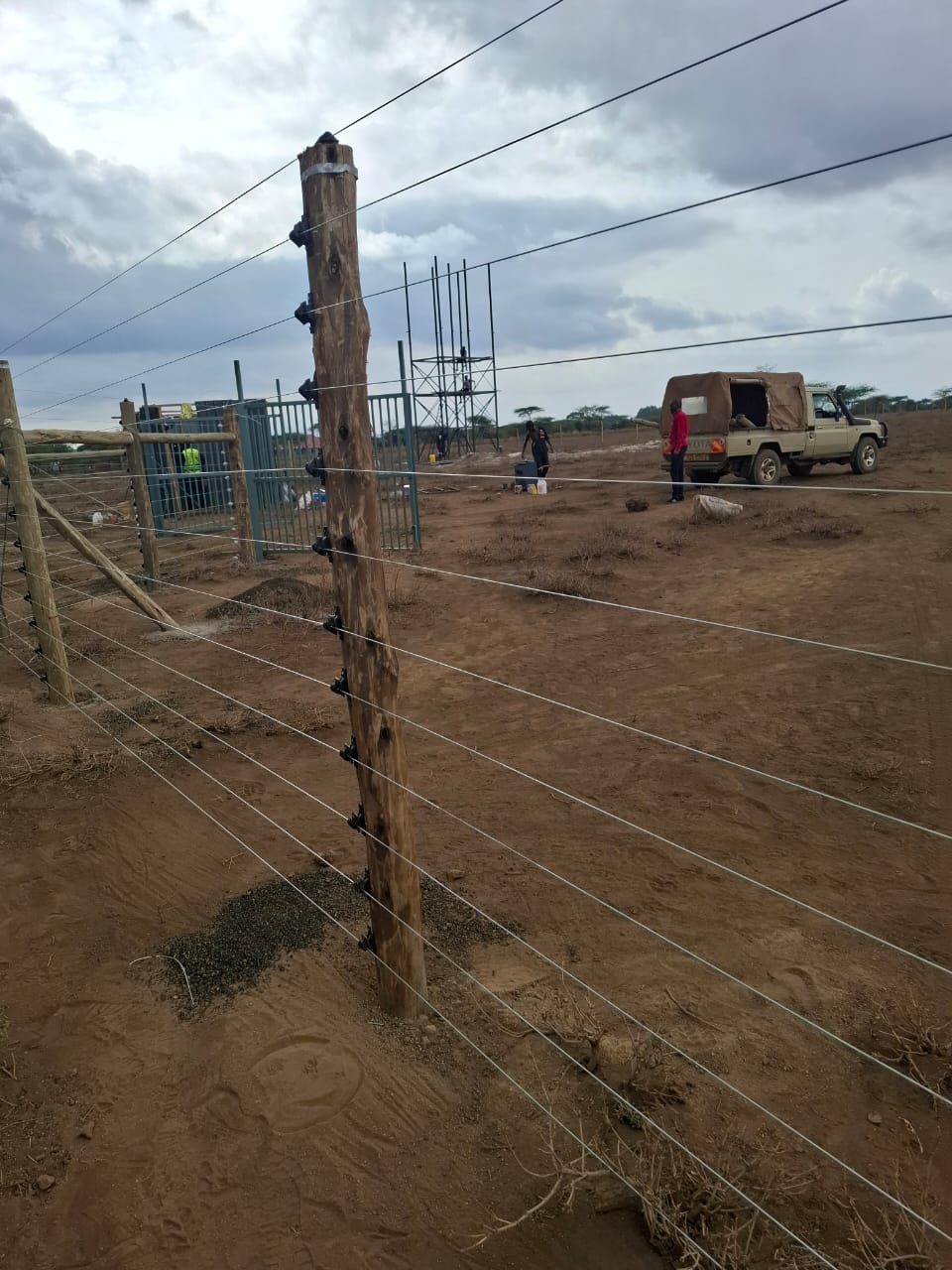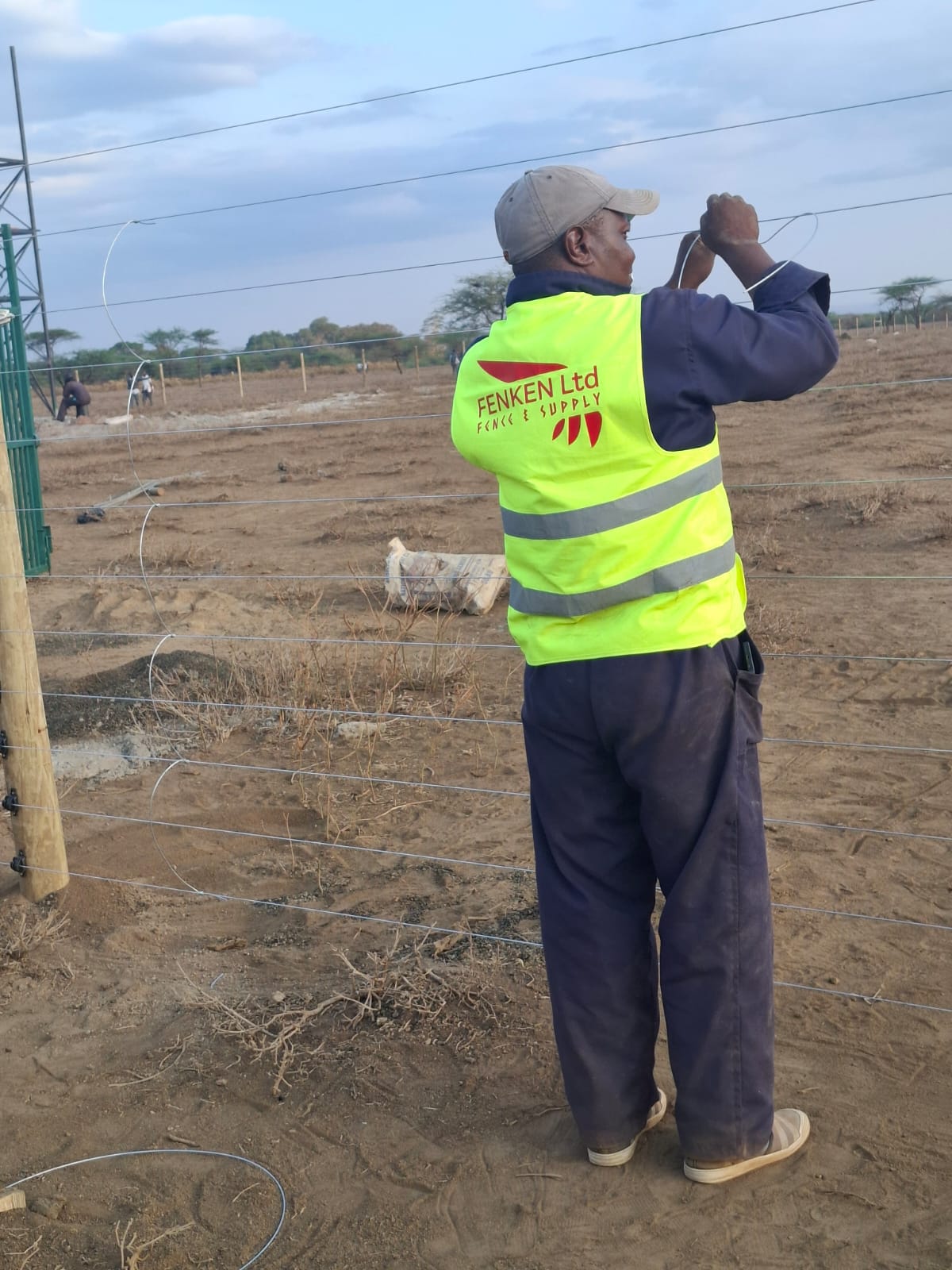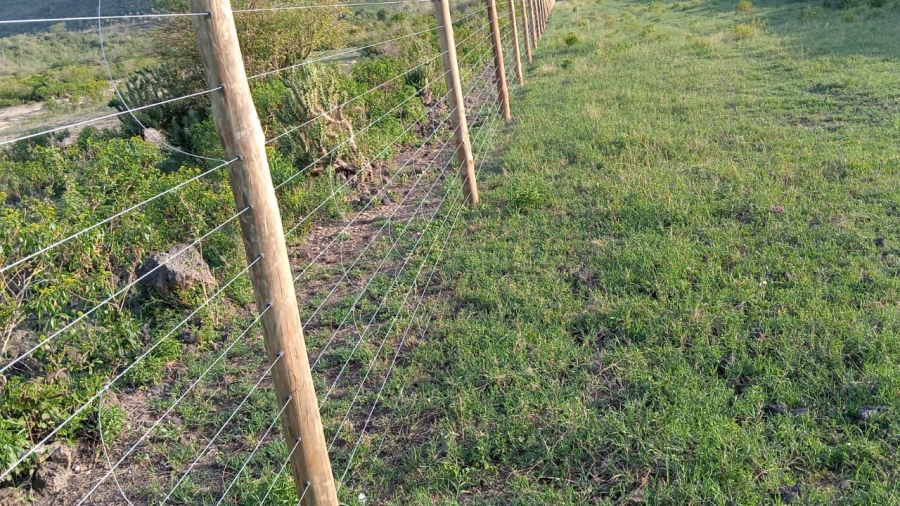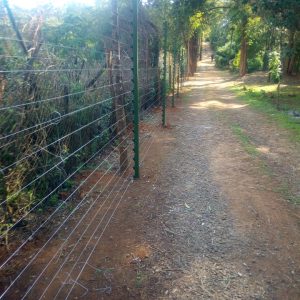At Fenken Fence & Supply, we believe a good fence doesn’t just stand — it thinks.
Today, our team is on-site, and in the photo above, one of our skilled technicians is installing a zig-zag wire configuration, a critical feature for modern electric fencing with alarm response capability.
This setup is what transforms a regular electric fence into a smart security system — one that not only deters intruders or wildlife but also instantly alerts owners or security personnel when tampered with.

What Is a Zig-Zag Wire?
The zig-zag wire is a clever arrangement of live and earth wires along the fence line, connected in an alternating pattern that enhances both security and sensitivity. Unlike the straight, uniform layout in standard electric fences, the zig-zag design creates multiple alternating contact points between live and earth wires, forming a responsive circuit.
When any section of the fence is cut, disconnected, or shorted, the circuit is broken. The energizer immediately detects the disturbance and triggers an alarm, activating a siren, strobe light, or sending a signal to the control unit or monitoring station.
Why the Zig-Zag Design Matters
In areas where security or wildlife management is a priority, this setup offers several advantages:
- Instant Alarm Response:
Any interference — whether intentional tampering or accidental breakage — triggers a rapid alarm, ensuring swift attention and response. - Improved Voltage Coverage:
The zig-zag arrangement distributes power more evenly across the fence line, maintaining consistent voltage levels even in long stretches. - Harder to Bypass:
The irregular pattern makes it nearly impossible for intruders (or animals) to identify “safe” or non-live sections. - Dual Functionality:
It combines physical deterrence with real-time monitoring — a fence that both guards and alerts.
What It Takes to Install One
Installing a zig-zag wire system requires precision, proper insulation, and perfect alignment. The wires must be evenly spaced and tightly tensioned to maintain current flow without arcing or energy loss.

At Fenken, our technicians ensure:
- Each wire is correctly terminated and insulated.
- The energizer used is alarm-compatible, capable of detecting faults and sending alerts.
- The tensioning and alignment are accurate to guarantee both strength and responsiveness.
It’s this level of attention to detail that makes a fence not only durable but intelligent.
Fenken’s Expertise
We have installed over 200 kilometres of electric fencing across Kenya — protecting farms, conservancies, and private properties. The zig-zag alarm fence is one of the advanced systems we recommend for clients seeking an extra layer of safety, especially in areas prone to intrusion or human–wildlife conflict.
Each installation is a product of experience, precision, and integrity, combining practical field expertise with cutting-edge technology.
In Summary
The zig-zag wire system represents the next step in electric fencing — a fusion of engineering and intelligence. It’s a reminder that security today is not just about building barriers, but about building awareness and response.
At Fenken, we continue to innovate and deliver solutions that protect property, promote safety, and give our clients peace of mind.
Learn more about our fencing systems and installations at fenken.co.ke


